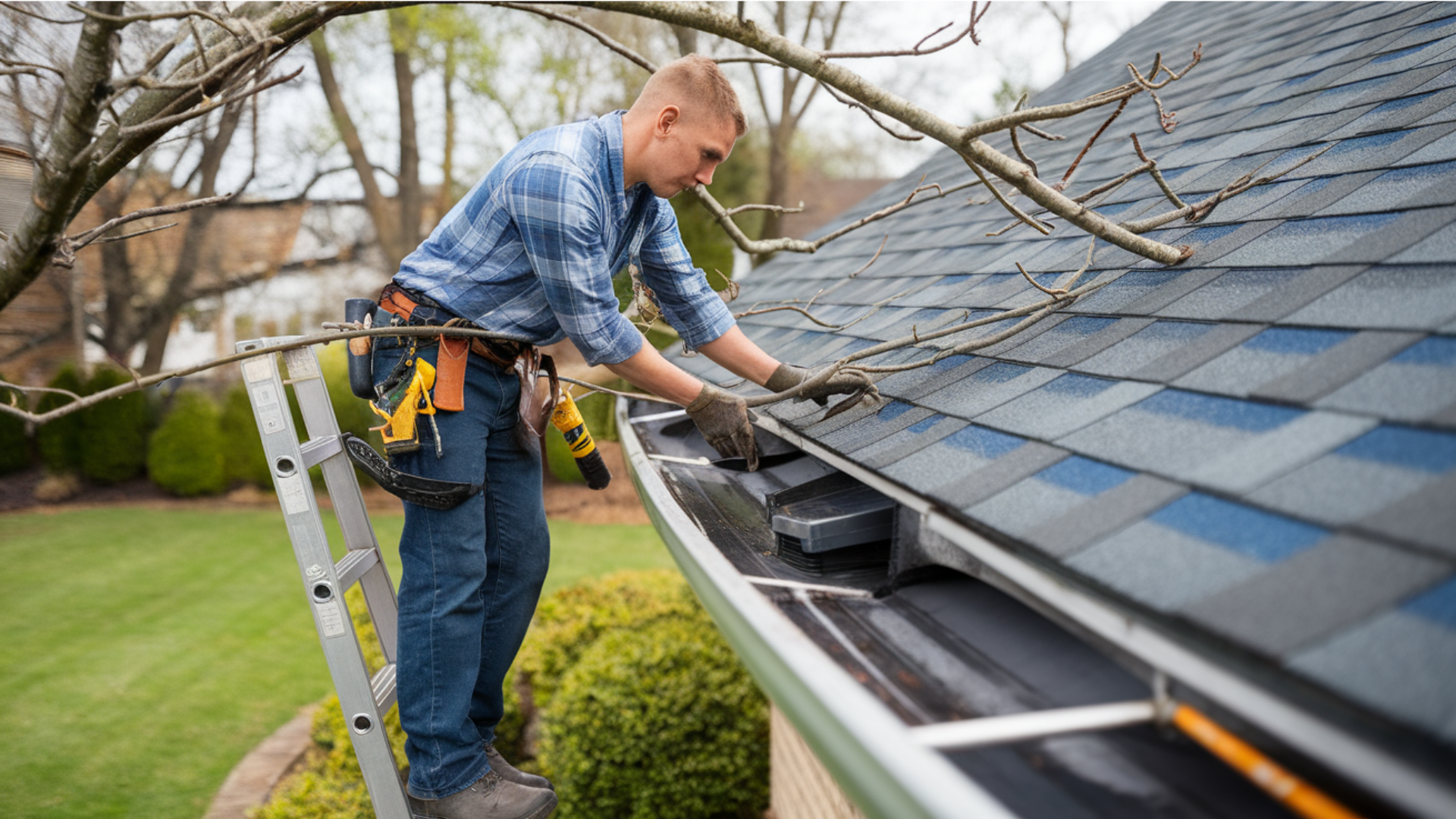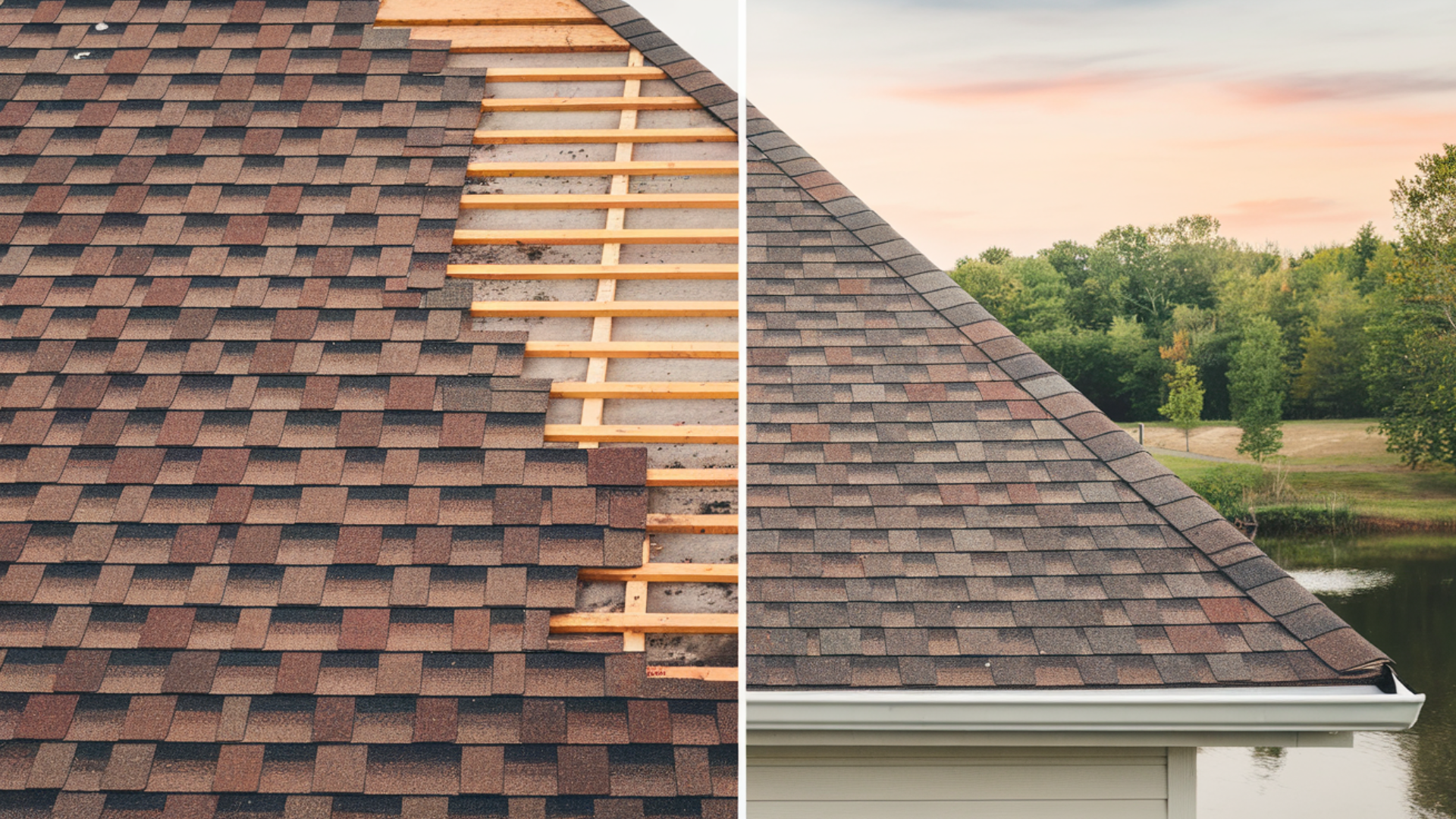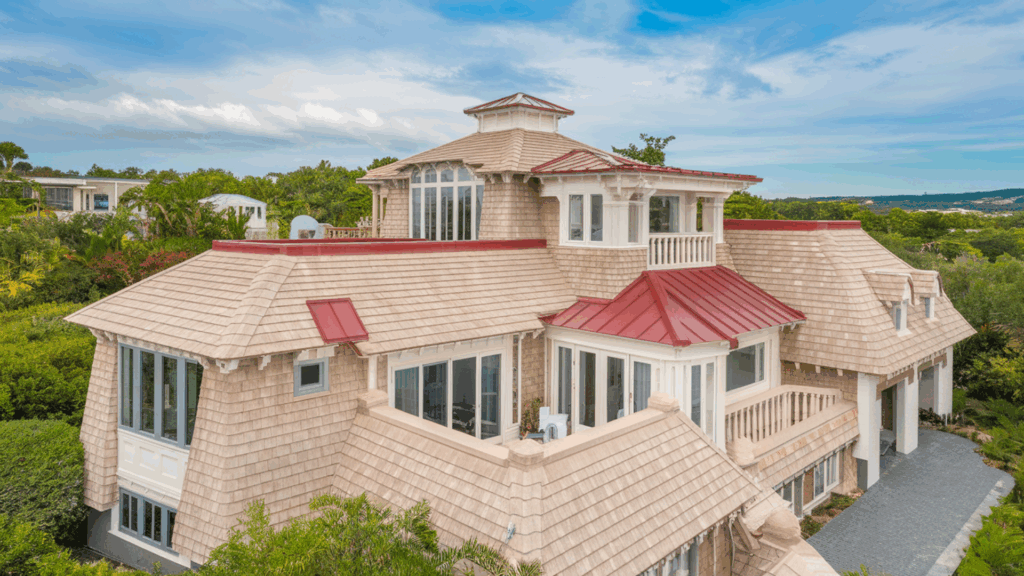When I first started working with roofs, I quickly learned that it’s easy to overlook what’s happening beneath the shingles.
Many people think the visible shingles are the most essential part, but there’s a lot more going on underneath.
Over the years, I’ve seen how crucial each layer is in ensuring the roof’s integrity, durability, and energy efficiency. Understanding these layers can make a big difference in the long-term care of your roof.
If you’re considering a new roof, noticing potential issues, or simply curious about what’s happening up top, understanding the role of each layer is essential.
In this guide, I’ll walk you through the different layers of a roof, explain their purpose, and share some maintenance tips. This knowledge will help you take better care of your roof and potentially save you money on repairs.
What Are Roof Layers?

A roof isn’t just a single surface; it’s composed of several layers, each serving a distinct purpose. These layers work together to protect your home, enhance energy efficiency, and increase the roof’s overall longevity. The basic layers include:
- Roof Decking: The foundation of your roof.
- Underlayment: The protective barrier.
- Roofing Membrane or Insulation: For added protection and insulation.
- Shingles or Roofing Material: The outermost visible layer.
The Key Layers of a Roof
A roof is made up of multiple layers, each serving a unique role in protecting your home. Together, these layers prevent moisture, regulate temperature, and ensure durability, from the foundational decking to the outer shingles.
1. Roof Decking
The roof decking, also known as sheathing, is the first and most important layer of your roof.
Typically made of plywood or oriented strand board (OSB), it serves as the foundation upon which all the other layers are built.
The decking is crucial because it provides support for the rest of your roofing system, including the shingles, underlayment, and insulation.
Maintenance Tip: Regularly inspect your roof decking for signs of damage, including rot and water stains.
If you notice any issues, it’s a good idea to have them checked out, as moisture buildup could cause further damage.
2. Underlayment
Directly beneath the shingles or roofing material lies the underlayment.
This layer provides an extra protective barrier against water infiltration, wind, and ice dams. It’s made from materials such as felt or synthetic polymers, depending on the type chosen for your roof.
Underlayment is critical because it ensures that, even if the shingles get damaged, the water doesn’t reach the other layers of your roof.
Maintenance Tip: Regularly check the underlayment for any tears or damage.
Although it may not be immediately visible, any breaches could compromise the entire roofing system.
3. Roofing Membrane or Insulation
In some roofing systems, especially on flat roofs or homes in colder climates, you’ll find an additional layer known as the roofing membrane or insulation.
This layer provides additional water resistance and helps regulate indoor temperatures by reducing heat loss.
- Roofing Membrane: Made of rubber or thermoplastic materials, this layer is commonly used on commercial roofs but can also be applied to residential properties.
- Insulation: In colder areas, adding insulation helps keep the home warm in winter and cool in the summer by improving the roof’s energy efficiency.
Maintenance Tip: Scrutinize this layer for cracks, wear, or separation from adjacent layers. If damage occurs, it may lead to costly repairs in the future.
4. Shingles or Roofing Material
Finally, the outermost layer of your roof is the shingles or roofing material, which is what’s most visible.
This layer protects everything underneath from direct exposure to the elements, including rain, wind, and sun.
The most common roofing materials include asphalt shingles, wood shakes, metal roofing, and tile.
This is where you get the appearance of your roof, and there are many styles and colors available to match your home’s overall design.
Why Roof Layers Matter?
Each layer of your roof is essential for maintaining durability, efficiency, and protection. Together, they guard against moisture, temperature changes, and improve structural integrity, ensuring the roof performs effectively and lasts longer.
1. Protection Against the Elements
Each layer of your roof plays a crucial role in defending your home against the elements, including rain, snow, wind, and harmful UV rays.
Without these protective layers, your roof would be vulnerable to a range of issues, such as leaks, water damage, and even structural damage.
These layers work in harmony to prevent such problems, ensuring that your roof remains strong and effective in keeping your home safe and dry.
Proper maintenance of each layer is essential to safeguard your home from severe damage and costly repairs.
2. Energy Efficiency
Properly installed underlayment and insulation can significantly enhance your home’s energy efficiency.
These layers help regulate the indoor temperature, keeping your home cooler in the summer and warmer in the winter, which can help save on energy bills.
3. Longevity of the Roof
The various layers of your roof work together to extend its lifespan. Proper protection maintains the integrity of the materials, reducing wear and tear over time.
This minimizes the need for costly repairs or replacements, saving you money in the long run.
By maintaining these layers, you can ensure your roof remains durable, offering lasting value and protection for your home.
4. Moisture Control
Roof layers play a vital role in preventing moisture from entering your home.
This is crucial in preventing water damage, rot, and mold growth, which can compromise the structural integrity of your home.
By maintaining the integrity of each layer, your roof helps protect your home from long-term moisture-related issues that could require expensive repairs.
5. Structural Integrity
The various layers of a roof provide structural support and strength, ensuring that it can withstand external pressures such as strong winds, heavy rain, or snow.
These layers work in tandem to maintain the roof’s overall durability, preventing damage that could compromise the roof’s performance and the safety of your home.
How to Care for Your Roof Layers?

Caring for the layers beneath your shingles is straightforward. It involves regular inspections and taking preventive steps to maintain their condition.
1. Regular Inspections
It’s essential to inspect your roof at least twice a year, once in the spring and once in the fall. Look for obvious signs of wear and tear, such as missing shingles, leaks, or water stains on the ceiling.
The sooner you identify a problem, the easier it will be to address.
2. Clean Your Gutters
Clogged gutters can lead to water backing up onto your roof, potentially damaging the underlayment and decking.
Cleaning your gutters regularly ensures that rainwater flows away from the roof properly.
3. Trim Overhanging Branches
If you have trees near your roof, overhanging branches can cause damage to the shingles, especially during storms.
Trim any branches that could potentially harm your roof to prevent unnecessary wear and tear.
4. Address Leaks Promptly
If you spot any leaks or water stains, address them immediately. Leaks can quickly spread and compromise the roofing layers beneath, leading to significant damage.
Fixing leaks promptly will prevent further deterioration and ensure the roof’s protection remains intact.
5. Check for Algae or Moss Growth
Algae and moss growth can damage your roof over time by retaining moisture, which can lead to rot or corrosion.
Regularly inspect for these growths, particularly in shaded or humid areas. Cleaning or treating the roof to remove algae or moss can help preserve the roof’s structural integrity.
When to Replace Roof Layers

Eventually, your roof’s layers will require attention. Below are the signs to look for: wear and tear, missing shingles, leaks, or water stains.
1. Worn or Missing Shingles
If shingles are curling, cracking, or missing, it’s a clear sign of wear and potential damage.
Missing shingles expose the underlayment and other layers to moisture, which can lead to leaks and more serious issues, such as water damage and mold growth.
It’s crucial to replace damaged shingles promptly to protect the underlying layers, prevent further damage, and maintain the roof’s overall integrity.
Addressing these issues promptly can save you from costly repairs in the future and help extend the lifespan of your roof.
2. Water Stains or Leaks
Water stains or leaks on your ceiling or attic are usually signs that something is wrong with one of the layers of your roof.
These issues are often caused by damaged shingles, underlayment, or decking, allowing water to seep in.
Leaks require immediate attention to prevent extensive water damage, mold growth, and further deterioration of the roof structure.
If left unchecked, these issues can lead to costly repairs, so addressing leaks early is essential to protect your home and save money in the long run.
3. Sagging Roof Decking
A sagging roof deck is often a sign of damaged or weakened decking, which is a serious structural issue that should never be ignored.
A sagging roof can compromise the entire integrity of your home’s structure, putting you at risk for further damage.
If you notice any signs of sagging, it’s crucial to have the roof inspected by a professional as soon as possible.
A thorough inspection will assess the extent of the damage and help determine the necessary repairs to restore the roof’s strength and prevent further complications.
4. Damaged Underlayment
If your underlayment becomes damaged or worn out, it can no longer protect the roofing system effectively.
Over time, the underlayment may deteriorate, allowing water infiltration and potentially causing further damage to the roof’s structural layers.
Timely replacement of this layer helps prevent significant issues down the road.
5. Visible Mold or Mildew
If you notice mold or mildew on the underside of your roof or attic walls, it often indicates water retention and poor ventilation.
These conditions can cause significant deterioration of the roof’s materials, leading to more extensive damage over time.
Mold and mildew thrive in damp, stagnant environments, making it crucial to address these issues promptly.
Replacing the affected layers and improving attic ventilation are essential steps in restoring the roof’s effectiveness and preventing further damage.
Ensuring proper airflow helps maintain the integrity of your roof and protects your home from future costly repairs.
Conclusion
Understanding the layers of your roof is crucial for ensuring the long-term health and performance of your home.
From the roof decking to the shingles, each layer serves a crucial function, whether it protects against the elements, enhances energy efficiency, or extends the roof’s lifespan.
If you notice signs of damage, don’t wait too long to address them – early intervention can save you from costly repairs down the road.
Remember, regular inspections and maintenance are key to keeping your roof in top condition. If you’re unsure about the condition of your roof, it’s always best to consult a professional.
Taking the time to care for your roof layers will keep your home safe, comfortable, and protected for years to come.

